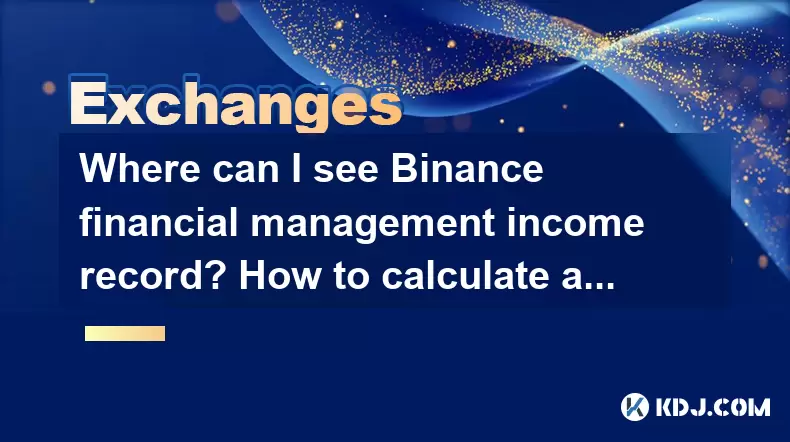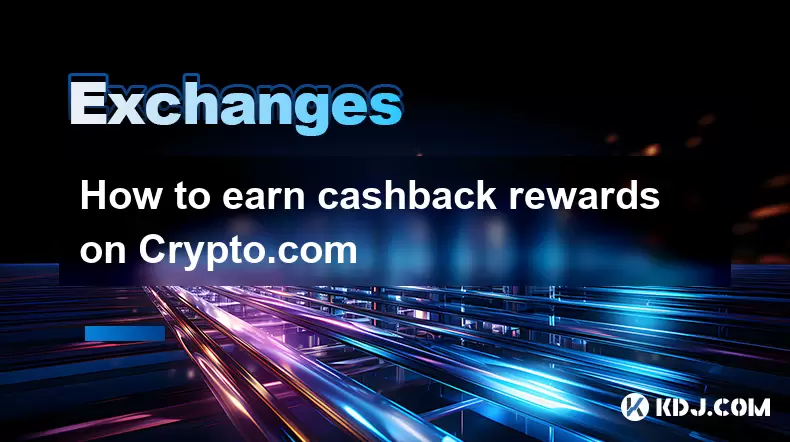-
 Bitcoin
Bitcoin $117600
0.25% -
 Ethereum
Ethereum $4424
0.10% -
 XRP
XRP $3.101
0.50% -
 Tether USDt
Tether USDt $1.001
-0.01% -
 BNB
BNB $836.2
1.26% -
 Solana
Solana $188.8
2.11% -
 USDC
USDC $1.000
0.01% -
 Dogecoin
Dogecoin $0.2301
0.57% -
 TRON
TRON $0.3485
-1.00% -
 Cardano
Cardano $0.9209
-1.34% -
 Hyperliquid
Hyperliquid $46.72
-1.19% -
 Chainlink
Chainlink $22.62
4.84% -
 Stellar
Stellar $0.4275
-0.38% -
 Sui
Sui $3.761
1.91% -
 Bitcoin Cash
Bitcoin Cash $586.7
-0.25% -
 Ethena USDe
Ethena USDe $1.001
0.01% -
 Hedera
Hedera $0.2510
2.06% -
 Avalanche
Avalanche $24.21
2.22% -
 Litecoin
Litecoin $119.7
1.07% -
 Toncoin
Toncoin $3.450
1.06% -
 UNUS SED LEO
UNUS SED LEO $9.411
-0.93% -
 Shiba Inu
Shiba Inu $0.00001298
1.20% -
 Uniswap
Uniswap $10.98
3.25% -
 Polkadot
Polkadot $3.961
2.16% -
 Dai
Dai $1.000
0.00% -
 Bitget Token
Bitget Token $4.642
0.95% -
 Cronos
Cronos $0.1514
0.57% -
 Ethena
Ethena $0.7290
3.78% -
 Monero
Monero $254.1
7.69% -
 Pepe
Pepe $0.00001102
2.47%
Where can I see Binance financial management income record? How to calculate annualized rate of return?
To manage investments on Binance, regularly review your financial management income records and calculate the annualized rate of return to assess performance.
May 09, 2025 at 04:14 pm

Managing your investments on Binance involves keeping a close eye on your financial performance, and understanding how to access your financial management income records is crucial. Additionally, calculating the annualized rate of return on your investments can help you assess their performance over time. This article will guide you through the process of viewing your income records on Binance and calculating your annualized rate of return.
Accessing Binance Financial Management Income Records
To view your financial management income records on Binance, follow these steps:
- Log in to your Binance account. Ensure you are on the official Binance website or using the Binance mobile app.
- Navigate to the 'Wallet' section. You can find this at the top of the page on the website or in the menu on the mobile app.
- Select 'Transaction History'. This will open a page where you can view all your transaction details.
- Filter by 'Financial Management'. Use the filter options to select 'Financial Management' to see income specifically related to your financial products.
- Review the details. You will see a list of transactions, including the date, type, and amount of income. You can further filter by date range or specific products to narrow down the results.
By following these steps, you can easily access and review your financial management income records on Binance, ensuring you stay informed about your investment performance.
Understanding Financial Management Products on Binance
Binance offers various financial management products such as Savings, Staking, and DeFi Staking. Each product has different ways of generating income:
- Savings: This product allows you to earn interest on your crypto holdings. You can choose between Flexible and Locked Savings, with Locked Savings typically offering higher interest rates.
- Staking: By staking your cryptocurrencies, you can earn rewards for supporting the operations of blockchain networks. Binance offers both Locked and DeFi Staking options.
- DeFi Staking: This involves locking your assets into DeFi protocols to earn yields. Binance simplifies the process by offering DeFi Staking products.
Understanding these products helps you better interpret the income records you see in your transaction history.
Calculating the Annualized Rate of Return
The annualized rate of return (ARR) is a measure of how much your investment has grown over a year, accounting for compounding. To calculate the ARR, you can use the following formula:
[ \text{ARR} = \left(1 + \frac{\text{Net Profit}}{\text{Initial Investment}}\right)^{\frac{365}{\text{Days Held}}} - 1 ]
Here’s a step-by-step guide to calculating the ARR:
- Determine your initial investment. This is the amount of money you initially put into the financial product.
- Calculate your net profit. This is the total income you've earned minus any fees or losses.
- Identify the number of days held. This is the total number of days your investment was active.
- Plug the values into the formula. Use the formula provided above to calculate the ARR.
For example, if you invested $1,000 and earned a net profit of $50 over 30 days, your ARR calculation would look like this:
[ \text{ARR} = \left(1 + \frac{50}{1000}\right)^{\frac{365}{30}} - 1 = \left(1 + 0.05\right)^{12.167} - 1 \approx 0.717 \text{ or } 71.7\% ]
This calculation shows that your annualized rate of return is approximately 71.7%.
Using Binance Tools for ARR Calculation
Binance provides tools to help you calculate the potential ARR for different financial products. Here’s how you can use these tools:
- Visit the 'Earn' section. On the Binance website or app, navigate to the 'Earn' section where you can find various financial products.
- Select a product. Choose the product you are interested in, such as Savings or Staking.
- View the projected APR. Each product will display an estimated Annual Percentage Rate (APR), which is a good starting point for calculating ARR.
- Use the APR to estimate ARR. Since APR does not account for compounding, you may need to adjust it to get a more accurate ARR. Use the formula mentioned earlier to fine-tune your calculation.
By leveraging these tools, you can get a better understanding of the potential returns on your investments.
Interpreting Your Income Records and ARR
Interpreting your income records and ARR is essential for making informed investment decisions. Here are some key points to consider:
- Consistency of Income: Check if your income is steady or fluctuates significantly. Consistent income can indicate a stable investment.
- Comparison with Market Rates: Compare the ARR you calculate with market rates to see if your investment is performing well.
- Risk vs. Reward: Higher ARR often comes with higher risk. Assess whether the potential return justifies the risk involved.
By regularly reviewing your income records and calculating your ARR, you can better manage your investments and make strategic decisions.
FAQs
Q: Can I export my financial management income records from Binance?
A: Yes, you can export your transaction history, including financial management income records, from Binance. To do this, follow these steps:
- Log in to your Binance account.
- Navigate to the 'Wallet' section.
- Select 'Transaction History'.
- Use the 'Export' option. You can choose to export the data in CSV format, which can be opened in spreadsheet software for further analysis.
Q: What is the difference between APR and ARR?
A: APR (Annual Percentage Rate) is the annual rate charged for borrowing or earned through an investment, without taking into account the effect of compounding. ARR (Annualized Rate of Return) takes into account the effect of compounding, giving a more accurate measure of the investment's performance over a year.
Q: How often should I check my financial management income records?
A: It's recommended to review your financial management income records at least monthly to track your investment performance and make any necessary adjustments. However, if you are actively managing your portfolio, you might want to check more frequently.
Q: Can I calculate ARR for multiple investments combined?
A: Yes, you can calculate the ARR for a portfolio by aggregating the net profits and initial investments of all your investments. Use the same formula mentioned earlier, but with the total initial investment and total net profit of your portfolio.
Disclaimer:info@kdj.com
The information provided is not trading advice. kdj.com does not assume any responsibility for any investments made based on the information provided in this article. Cryptocurrencies are highly volatile and it is highly recommended that you invest with caution after thorough research!
If you believe that the content used on this website infringes your copyright, please contact us immediately (info@kdj.com) and we will delete it promptly.
- Kazakhstan's Crypto Leap: Bitcoin ETF and Central Asia's Digital Finance Future
- 2025-08-13 12:45:19
- BlockDAG Presale Blazes Past $371M: Fundraising Frenzy Fuels Crypto Sensation
- 2025-08-13 13:05:21
- Meme Coins: Chasing the 2025 Surge – Which Will Moonshot?
- 2025-08-13 10:25:23
- Bitcoin's Wild Ride: Rally, Pullback, and What's Next
- 2025-08-13 10:25:23
- Bitcoin, Bitmax, and Institutional Demand: A New Era of Crypto Investment
- 2025-08-13 10:45:12
- Solana, ROAM, and Airdrops: What's the Buzz in 2025?
- 2025-08-13 11:35:13
Related knowledge

How to use margin trading on Poloniex
Aug 08,2025 at 09:50am
Understanding Margin Trading on Poloniex

How to read the order book on KuCoin
Aug 10,2025 at 03:21pm
Understanding the Order Book Interface on KuCoinWhen accessing the order book on KuCoin, users are presented with a real-time display of buy and sell ...

How to read the order book on KuCoin
Aug 12,2025 at 02:28am
Understanding the Basics of Staking in CryptocurrencyStaking is a fundamental concept in the world of blockchain and cryptocurrencies, particularly wi...

How to set price alerts on Kraken
Aug 11,2025 at 08:49pm
Understanding Price Alerts on KrakenPrice alerts on Kraken are tools that allow traders to monitor specific cryptocurrency pairs for price movements. ...

How to avoid high gas fees on Uniswap
Aug 13,2025 at 11:35am
Understanding Gas Fees on UniswapGas fees on Uniswap are payments made to Ethereum miners or validators for processing transactions on the blockchain....

How to earn cashback rewards on Crypto.com
Aug 12,2025 at 02:08am
Understanding Cashback Rewards on Crypto.comCashback rewards on Crypto.com are a feature designed to incentivize users to spend using their Crypto.com...

How to use margin trading on Poloniex
Aug 08,2025 at 09:50am
Understanding Margin Trading on Poloniex

How to read the order book on KuCoin
Aug 10,2025 at 03:21pm
Understanding the Order Book Interface on KuCoinWhen accessing the order book on KuCoin, users are presented with a real-time display of buy and sell ...

How to read the order book on KuCoin
Aug 12,2025 at 02:28am
Understanding the Basics of Staking in CryptocurrencyStaking is a fundamental concept in the world of blockchain and cryptocurrencies, particularly wi...

How to set price alerts on Kraken
Aug 11,2025 at 08:49pm
Understanding Price Alerts on KrakenPrice alerts on Kraken are tools that allow traders to monitor specific cryptocurrency pairs for price movements. ...

How to avoid high gas fees on Uniswap
Aug 13,2025 at 11:35am
Understanding Gas Fees on UniswapGas fees on Uniswap are payments made to Ethereum miners or validators for processing transactions on the blockchain....

How to earn cashback rewards on Crypto.com
Aug 12,2025 at 02:08am
Understanding Cashback Rewards on Crypto.comCashback rewards on Crypto.com are a feature designed to incentivize users to spend using their Crypto.com...
See all articles

























































































